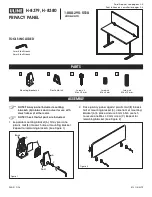
4.1.1 3 WIRE PNP / NPN SWITCHING SENSORS (30S, 30W) CONTINUED
Input
Common
Input
Card
Input
Common
Input
Card
1
2
3
4
Output
Common
Output
Card
1
2
24V +
0V
GND
I/O
Card
Power
Supply
1
2
3
8
7
6
5
4
Terminal Block
V+ (24V+)
Closed Output Signal (DI)
Open Output Signal (DI)
V- (0V)
Solenoid Control Signal (DO)
External So
External Solenoid -
EC30_
3
2
1
Solenoid
Valve
Typical basic installation
Wiring considerations
The pins V+ (24V+) and V- (0V) provide power for the unit’s sensor
circuitry and solenoid output. These pins should be wired to the same
24 VDC (18-30 VDC) source used for field wiring connections of the
input / output card(s). There is no isolation between V+ / V- pins to the
signal pins. The power supply used must be able to provide enough
power/current for the unit’s circuitry plus current required for the signals
and external solenoid.
The open and closed signal pins should be wired to the input card’s
signal input terminal. No connection to the common terminal is
required.
The solenoid control signal pin should be wired to the output card’s
output (switched) terminal. No connection to the common terminal is
required.
Self-learning signals
Every time power is cycled to V+ / V-, the device will test the signal
wires to learn what type of input and/or output card(s) are wired to
each signal. If a signal is open-circuit, the device will continue to test it
until a card is detected. If the open or closed signal is short-circuited,
the device will retest the signal once the short circuit is removed.
Like most solid-state sensors, some current restrictive input cards
may detect a momentary ON state while the device is booting. Most
input cards (especially those designed for solid-state sensors) will not
experience an ON state during boot up.
Stonel product publication 105509revA | EC70EN- 6/2022
10











































